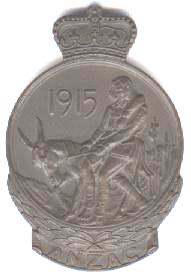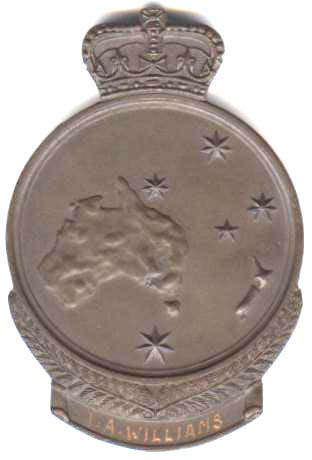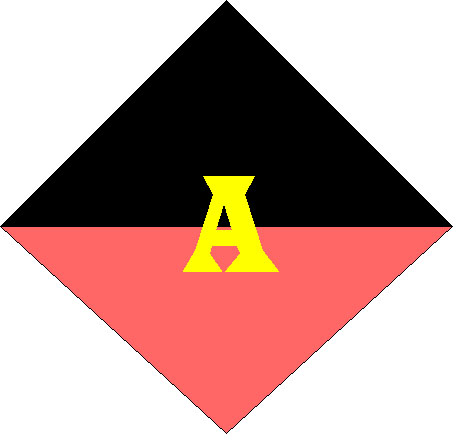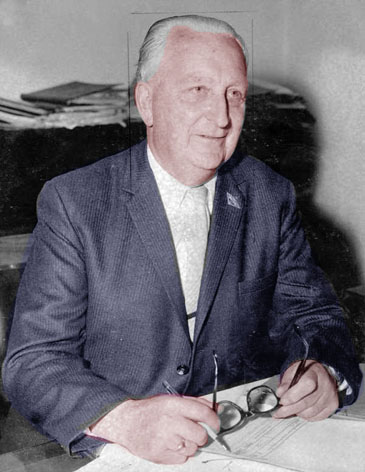Ivor Alexander Williams was born in Ballarat
Victoria in 1897. He had a difficult childhood and was bought up by the Gadd family in
Melbourne until he enlisted in the first A.I.F. (Australian Imperial Forces) at 18 years
of age.
More details of his life can be seen at his Autobiography written just before he died in
1975. The second half of which had to be completed by his family after his death.
He served in the 21st Battalion, 2nd Division as a signalman, was torpedoed on the
'Southland' on the 2nd September 1915 and then took part in many of the battles at
Gallipoli and France in World War One (1914-1918).
He survived Gallipoli with out a scratch but was wounded several times in France and was
sent back to England where they patched him up and sent him back again and again. Have a look as some of the letters he received from England
This went on for four years until he returned home in early 1919 a very
sick young man at only 22 years of age.
Suffering from his wounds for a great deal of years, he was to
be in and out of hospital for many months, during this time he met and married my
mother, Alexandra Jean Melville, she sang in a concert party
who spent their time cheering up the wounded and sick soldiers who had returned from the
war.
Her father John Melville played a big part in the formation of the
AFL football team, Carlton and the formation of the VFL.
During the depression years Ivor Williams managed to look after his wife
Jean and his two children, Maynie Melville and myself, Alexander Hugh.
We never went short of any thing.
Read his day by day Diary of his
time overseas in World War One.
1915 ..... 1916 ..... 1917..... 1918.....1919
Click on the Year.
Ivor Williams' diary has been used for reference in
at least three major military history books on World War One.:-
1. "Soldier Boy" by Anthony Hill. The true story of Jim Martin, 'The Youngest ANZAC'
2. "Gallipoli: Our Last Man Standing" by Jonathan King. The life of 'Alec Campell'.
3. "Gallipoli Diaries" by Jonathan King.
4. "Bullecourt 1917, Breaching the Hindenburg
Line" by Paul Kendall.
Pictures
that were taken by Cpl. Ivor Williams during WW1 that have never been published before.
More
pictures of Cpl. Ivor Williams recovering in the Caulfield Repatriation Hospital in the
early 1920s
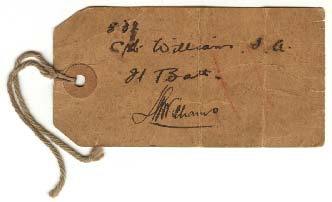
|
This
"Toe Tag" that was attached to my father's toe for identification purposes when
he was wounded , they did not have ID tags issued at that stage
of the war.
I still have this in my possession.
See mention of this in the diary
on 3 September 1918 |
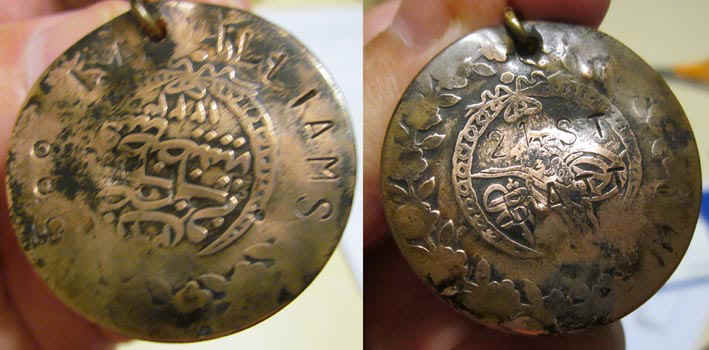 |
After nearly 100 years
this home made (Trench Art) ID Tag made from what appears to be a Turkish Coin came into
my possession.
I was very thrilled to get it as it was advertised on EBay.
For further details, CLICK HERE |
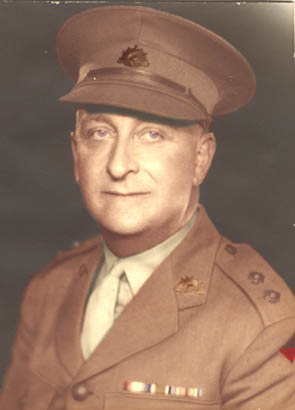
|
|
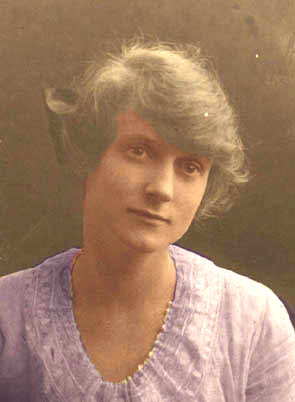
|

|
Lt. (later Capt). Ivor Williams |
Alexandra Jean Williams (Melville) |
When World War Two broke out Ivor Williams served as an Officer
(Number VX 151860). He gained the rank of Captain and served in Queensland and many
locations in the Pacific Islands, again he suffered greatly from the rigours of war as he
was injured again and developed all sorts of tropical illnesses.
The last position was with the H.Q. 5 Aust. Labour Group and was discharged in late 1946
again a very sick man. Very little is known of his activities as he did not keep a
diary this time.
In April 1995 I
transcribed notes about his life that he had written in 1975 just before he died into a
book called "My Dad, My Hero"
Have a read about what he did with the rest of his life".
After this was completed his day by day diary of World War One
was found and this too has been retyped and is now in book form and now accessible from
this page, see above.
In April/May 1999 I went over to Turkey and France to follow in my father's footsteps, it
was a great experience, something I will value for the rest of my life. Have a look at My Diary of the trip
Australian War Memorial (Canberra)..................File Number PR 91/113 |
